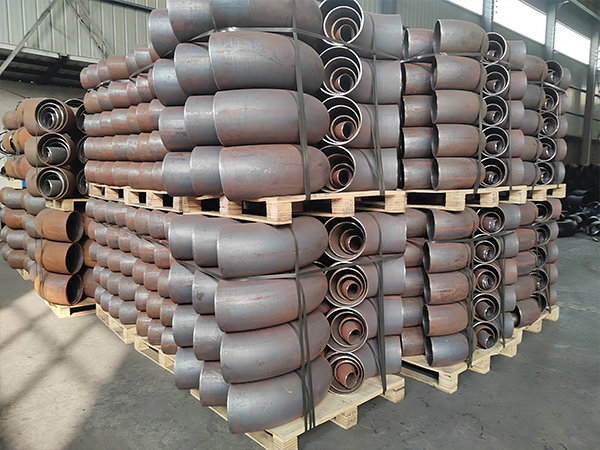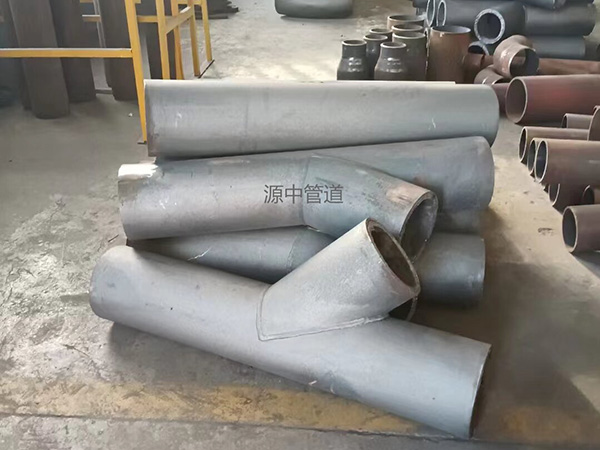NewsDetails
Common Causes of Failure in PTFE-Lined Pipes
author:Yuanzhong time:2025-09-18 21:36:46 Click:118
PTFE-lined pipes are renowned for their exceptional chemical resistance,but they are not indestructible.Their failures are rarely due to the corrosion of the PTFE itself.Instead,failure almost always stems from the physical misuse or misapplication of the lined component,which compromises the integrity of the liner.Understanding these common failure modes is key to prevention.
1.Thermal Failure:Expansion and Vacuum Collapse
This is the most prevalent cause of failure in PTFE-lined systems.
Thermal Expansion and Buckling:PTFE has a very high coefficient of thermal expansion—about ten times that of steel.When the system is heated,the PTFE liner wants to expand significantly more than the constraining steel shell.If the pipeline system is not designed with features to accommodate this growth(such as expansion joints or properly designed bends),the liner has nowhere to go.This leads to stress buildup,causing the liner to buckle,warp,or collapse inward.This often results in flow restriction,complete blockage,or liner delamination.
Vacuum Collapse:Standard PTFE liners are not designed to withstand internal vacuum(negative pressure).The liner is essentially a loose sleeve inside the pipe.When a vacuum occurs,atmospheric pressure on the outside of the pipe crushes the unsupported liner.This collapse is often sudden and catastrophic,rendering the pipe useless.Solution:For any service where vacuum is possible,specially designed vacuum-rated pipes with mechanical locks that secure the liner to the steel shell must be used.
2.Mechanical Damage:During Installation and Service
The PTFE liner is soft and susceptible to physical damage.
Installation Abuse:This is a critical period.Common errors include:
Forced Alignment:Using tools like steel rods threaded through the pipe to force flanges into alignment can score,tear,or puncture the liner.
Dropped Pipes:Impact from being dropped can crack the flange faces or cause the liner to crack or separate from the shell.
Improper Tool Use:Using sharp or metallic tools inside the pipe during installation.
Abrasive Service:While chemically resistant,PTFE has poor abrasion resistance.Using it to transport slurries with sharp,hard particles will cause rapid erosive wear,thinning the liner and eventually exposing the steel shell.
3.Improper Flange Management
The flange area is a high-stress point and a common source of leaks.
Over-Tightening Bolts:Applying excessive torque to flange bolts can over-compress and permanently deform the PTFE liner face and the gasket.This"cold flow"of the material can crush the liner,reducing its thickness and sealing capability,leading to leaks.
Under-Tightening Bolts:Insufficient bolt torque fails to compress the gasket adequately,resulting in leaks from the start.
Uneven Bolting:Not following a star-pattern tightening sequence can create uneven pressure on the flange face,distorting the liner and creating a path for leakage.
4.Permeation and Blistering(A Stealthy Failure)
This is a more subtle failure mode specific to certain polymers like PTFE.
The Process:Certain small,aggressive molecules(e.g.,chlorine,bromine,strong acids)can actually permeate or diffuse through the solid PTFE liner over time.
Blister Formation:Once these molecules penetrate the liner,they reach the interface between the PTFE and the steel shell.If there is any minor void or if the adhesive bond is imperfect,the permeant can accumulate.Changes in temperature or pressure can then cause this trapped gas or liquid to expand,forming blisters between the liner and the shell.These blisters can grow,liners can delaminate,and eventually,the blister may rupture.
5.Chemical Attack at Elevated Temperatures
While PTFE is inert to most chemicals at room temperature,its resistance can be compromised under extreme conditions.
Temperature Limit:PTFE has an upper continuous service temperature of around 260°C(500°F).Above this temperature,the material begins to soften and degrade.
Aggressive Media:Certain highly reactive chemicals(e.g.,molten alkali metals,fluorine)can attack PTFE,especially when combined with high temperature and pressure.Exceeding the pressure-temperature rating of the specific pipe will lead to deformation or failure.
Summary:
In essence,the failure of a PTFE-lined pipe is almost always a failure of application,not a failure of the material's chemical resistance.The most common culprits are improper system design for thermal and vacuum conditions,physical damage during handling,and incorrect installation procedures.A successful application requires respecting the physical and mechanical limitations of the PTFE liner as much as leveraging its unparalleled chemical inertness.
 Recommended Products
Recommended Products
 Contact us
Contact us
—— Contact:Manager
—— Tel:+86 19833790008
—— Email:772878082@qq.com
—— Url:http://www.yuanzhongpipeline.com
—— Address:Pucheng Development Zone, Yanshan County, Hebei Province















